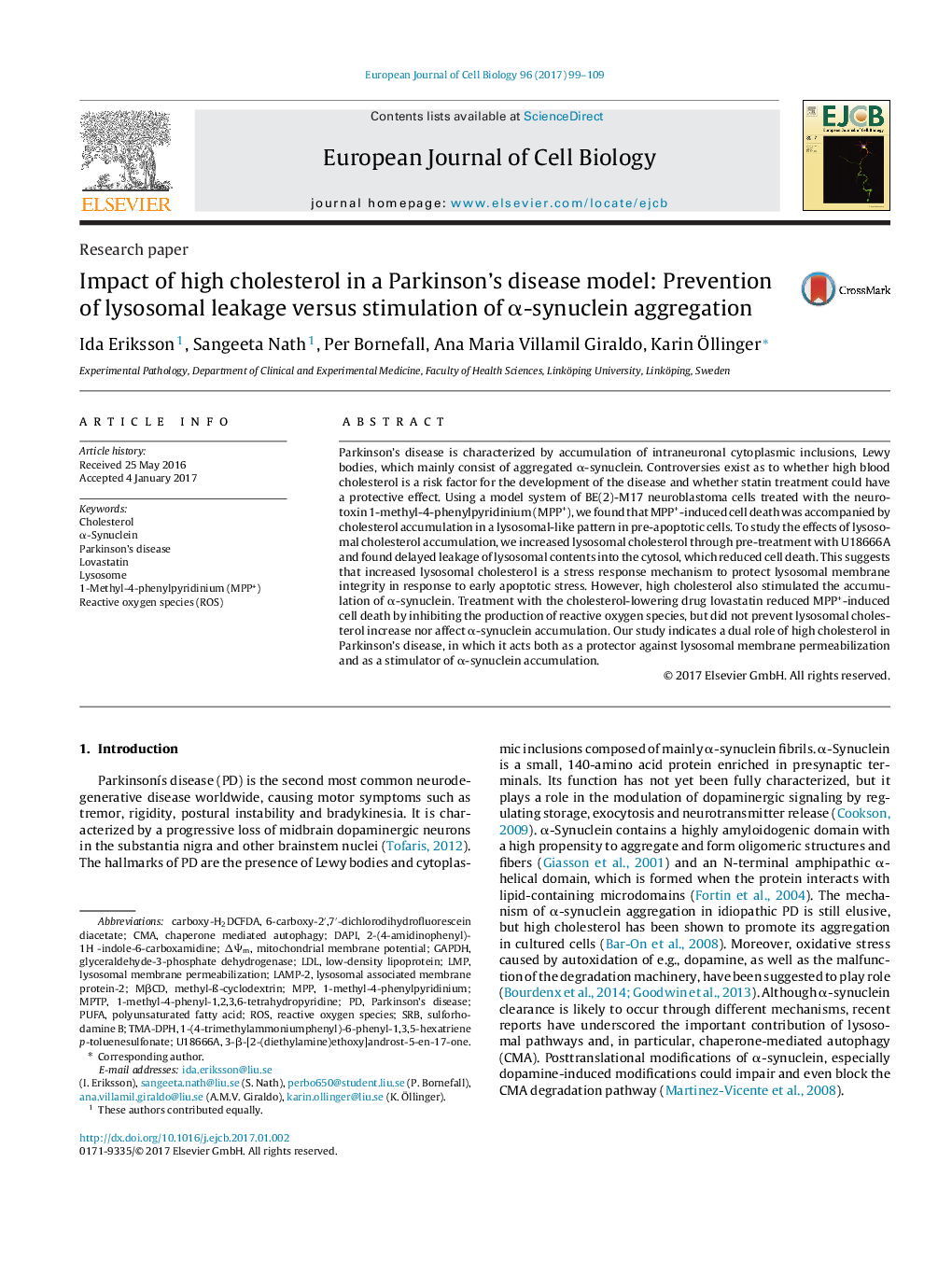| Article ID | Journal | Published Year | Pages | File Type |
|---|---|---|---|---|
| 5532249 | European Journal of Cell Biology | 2017 | 11 Pages |
Parkinson's disease is characterized by accumulation of intraneuronal cytoplasmic inclusions, Lewy bodies, which mainly consist of aggregated α-synuclein. Controversies exist as to whether high blood cholesterol is a risk factor for the development of the disease and whether statin treatment could have a protective effect. Using a model system of BE(2)-M17 neuroblastoma cells treated with the neurotoxin 1-methyl-4-phenylpyridinium (MPP+), we found that MPP+-induced cell death was accompanied by cholesterol accumulation in a lysosomal-like pattern in pre-apoptotic cells. To study the effects of lysosomal cholesterol accumulation, we increased lysosomal cholesterol through pre-treatment with U18666A and found delayed leakage of lysosomal contents into the cytosol, which reduced cell death. This suggests that increased lysosomal cholesterol is a stress response mechanism to protect lysosomal membrane integrity in response to early apoptotic stress. However, high cholesterol also stimulated the accumulation of α-synuclein. Treatment with the cholesterol-lowering drug lovastatin reduced MPP+-induced cell death by inhibiting the production of reactive oxygen species, but did not prevent lysosomal cholesterol increase nor affect α-synuclein accumulation. Our study indicates a dual role of high cholesterol in Parkinson's disease, in which it acts both as a protector against lysosomal membrane permeabilization and as a stimulator of α-synuclein accumulation.
Graphical abstractDownload high-res image (82KB)Download full-size image
